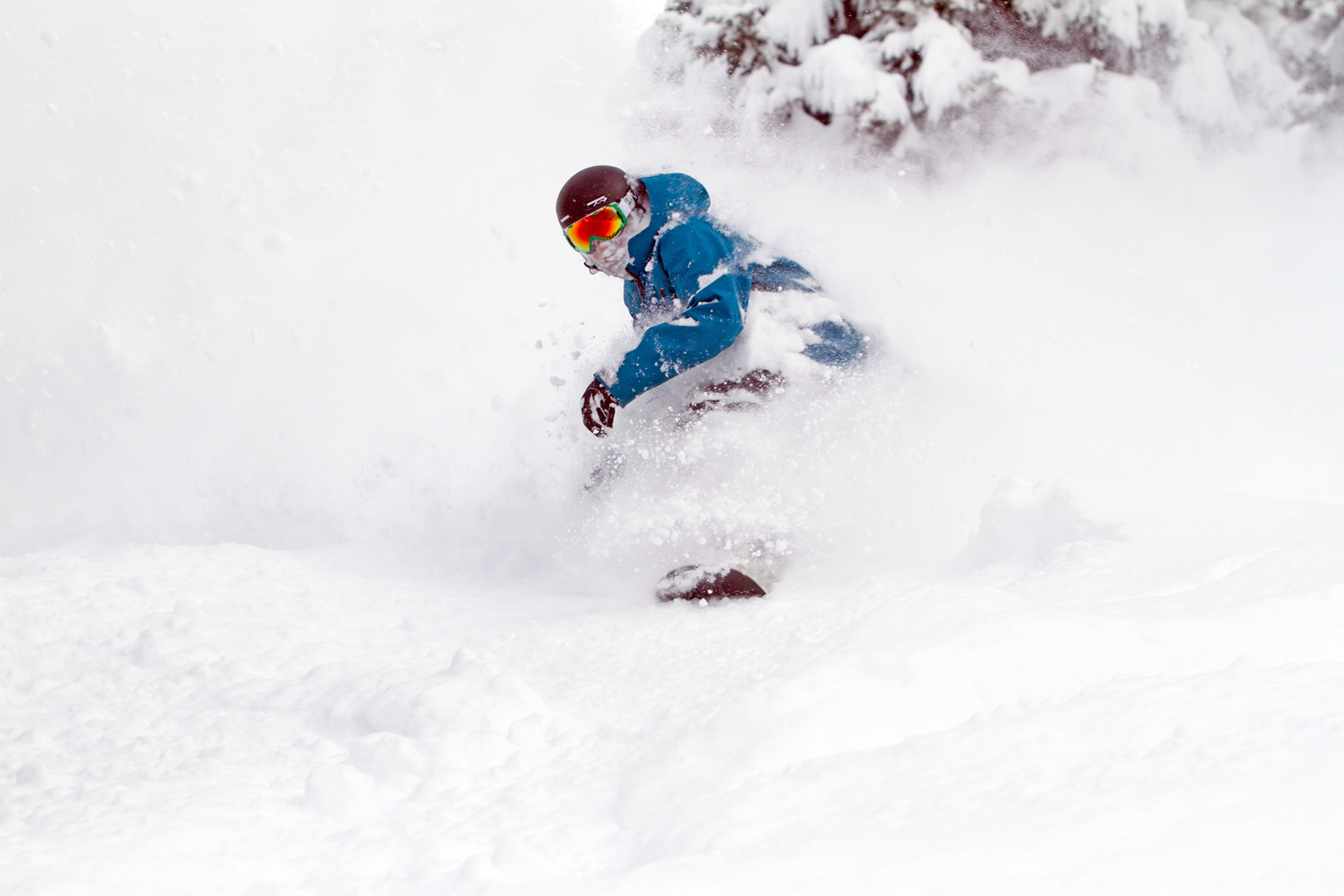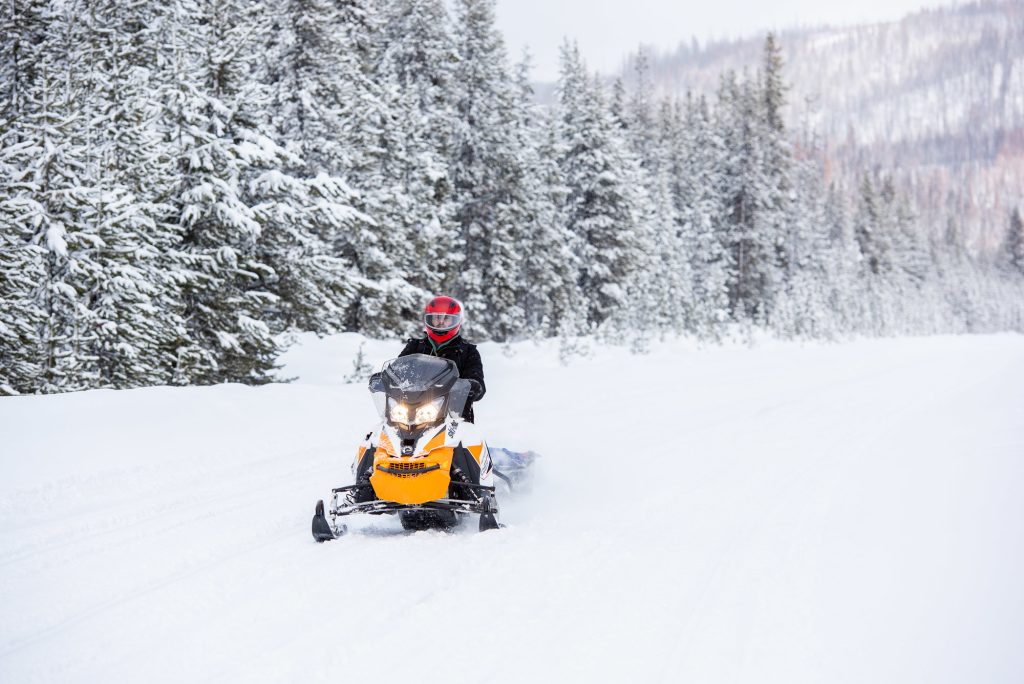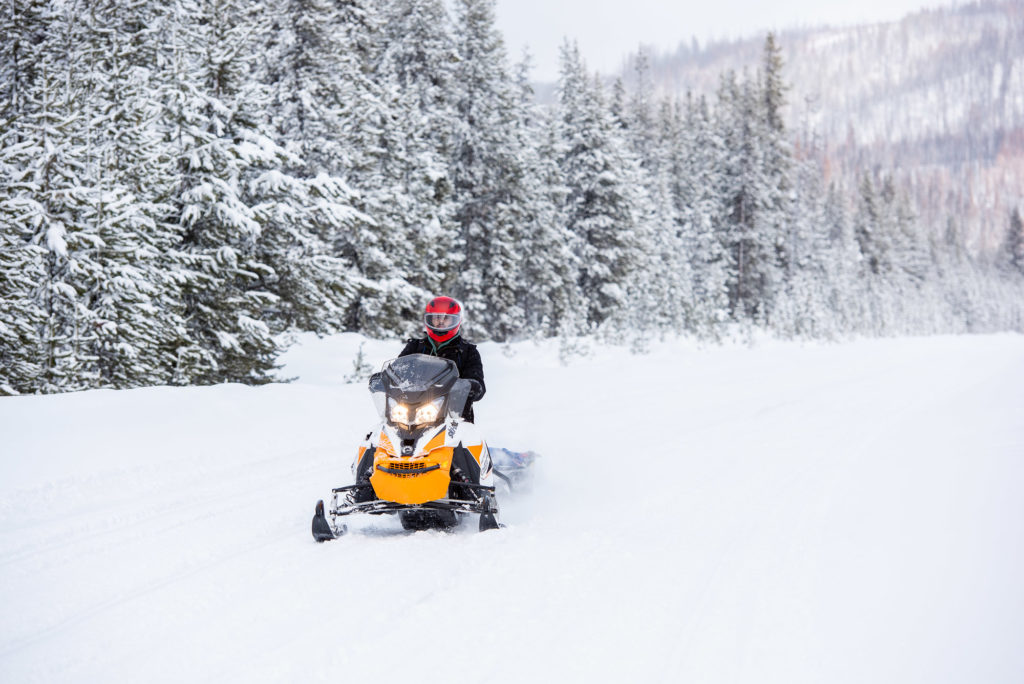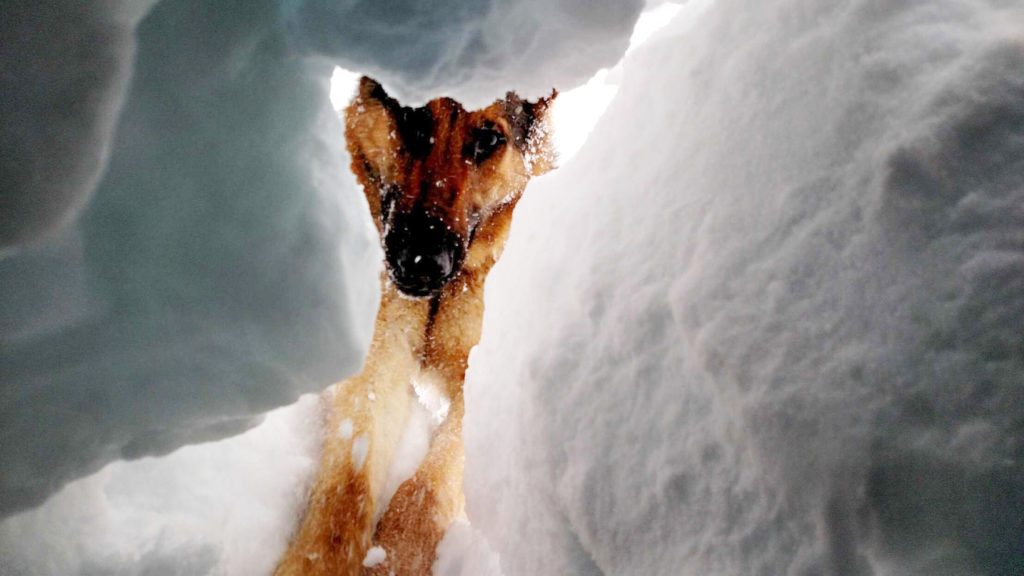A first-timer’s tale of overnight backcountry skiing
By Samantha Sais
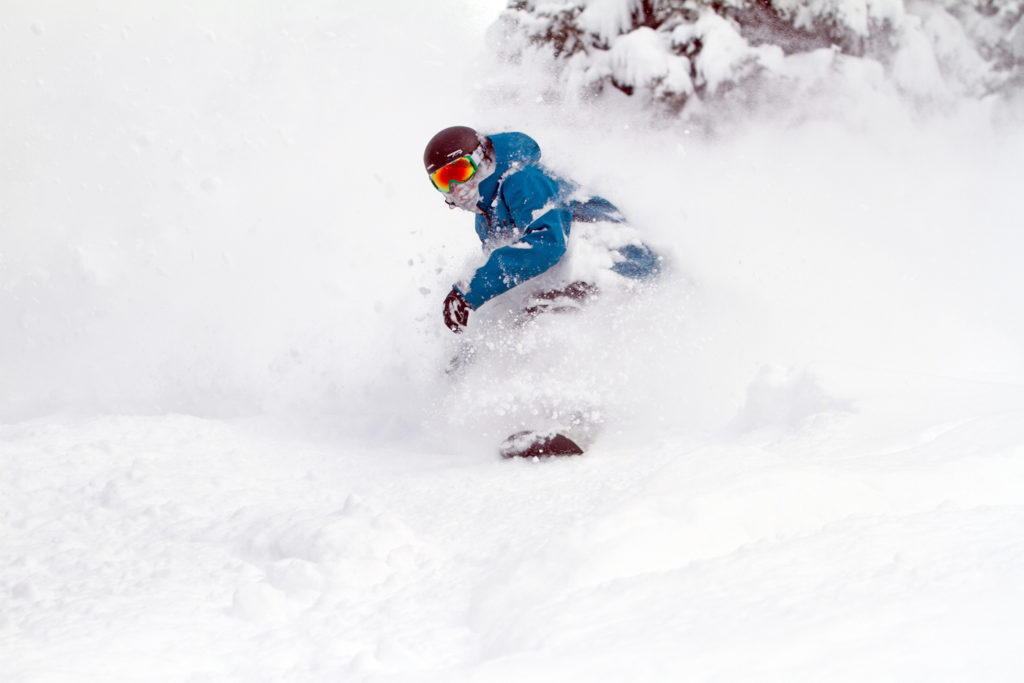
Backcountry skiing tends to have this mythical aura about it. That expanse of untracked snow, the sweat equity earned climbing up a mountain, the thrill of exploration, and just a hint of the unexpected create a temptation few can pass up. McCall may be best known for our developed resorts, Brundage Mountain Resort, the Little Ski Hill and Tamarack Resort, but the 300-plus inches of snow each winter paired with vast public lands make this a worthy backcountry destination.
While stories of “white rooms” and waist-deep powder tend to steal the show when it comes to backcountry skiing, it takes a ton of preparation, planning and backcountry safety before the stories can be experienced. For anyone new to the sport, or new to the area, one of the best ways to earn your backcountry turns is by hiring a guide service.
Brundage SnowCat Adventures offers full-day ski trips on close to 18,000 acres of terrain while Payette Powder Guides in McCall offers both daily and overnight backcountry trips off of Lick Creek Summit with 30,000 acres of untracked snow. In addition, Payette Powder Guides offers several avalanche safety courses each month to help give recreationalists the tools to stay safe in the backcountry.
If one of these epic trips has been on your bucket list, you probably have a million questions about the experience. We asked Samantha Sais to document her first overnight backcountry ski trip with Payette Powder Guides to help us provide the answers.

Getting an invite to go on a backcountry yurt trip was equally exciting as it was overwhelming. This was my first multi-day backcountry ski trip and I had so many questions. Who else would be going? What is the skiing ability of everyone going? Has anyone taken some type of avalanche safety course? Is it required? Where are we skiing? What’s the terrain like? What gear do we bring? Do I have the right gear? What do we eat? Where do we poop? How do we get to the yurt?
With all of these questions, you might ask why anyone would go on a backcountry yurt skiing adventure. The answer is simple… the freshies! All that fresh, untracked powder, and the pleasure of climbing the mountain to ski your line of choice. On top of that, the group bonding experience is something I couldn’t pass up. Like any great adventure, be it backpacking, rafting, mountain biking, or backcountry skiing, the enjoyment you can have with a great group of friends is unforgettable.
For my first foray into the overnight backcountry skiing world, we planned to spend four glorious days at the Lick Creek Summit yurts. Our group met at the Lick Creek trailhead and we were shuttled 15 miles up to the Lick Creek summit via the Payette Powder Guides’ snowcat, driven by Marty Rood, the company owner.
Our trip had an eclectic mix of people: some were great skiers, some were moderate skiers, and a few had only ventured off of a groomer a handful of times. I’ve gone backcountry skiing less than 10 times and really only started skiing two winters ago. I felt good about my abilities and knew where to push myself. Still, the backcountry asks for another level of caution that I knew I had to respect. To risk an injury meant a potentially long and difficult evacuation out of the mountains with only myself and my fellow skiers to rely on.
The most difficult part of my first overnight backcountry ski trip was admittedly the logistical planning. It is intimidating! But a bit of prep and a few trusty checklists helped me overcome this hurdle. Focusing on my own gear, I packed the essentials: skis with touring bindings, touring boots, ski poles, a beacon, probe and shovel in my day pack. Also, plenty of water for each day we planned to ski, along with food, snacks, and a couple of beers. It’s important to wear and pack the right clothing, making sure you have good layering to help you adjust for uphill and downhill body temperature, so I packed a good assortment of layers.
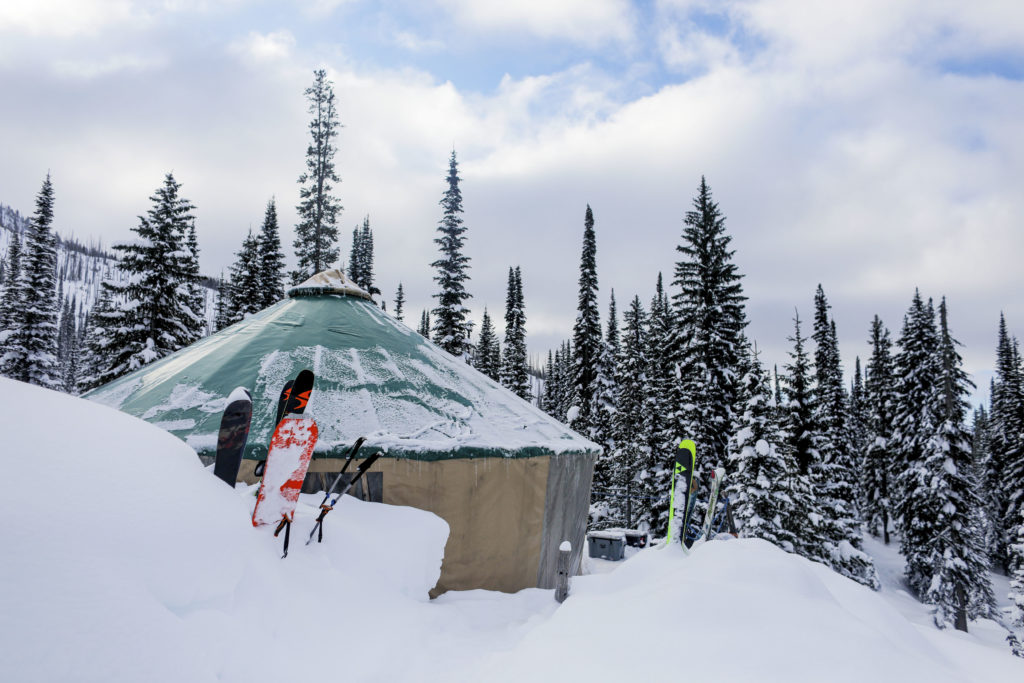
After all that planning and packing, it was finally time to board the snow cat for a ride to our new home away from home at the backcountry yurts. After settling in and unpacking a bit, we practiced using our avalanche transceivers. We discussed our game plan, reviewed the route, and off we went, everyone with a clear understanding of our plans for the first runs of the trip. We did a short tour that afternoon that gave us a glimpse of the beauty of the surrounding area. There is something special about skinning up a mountain…it gives you an appreciation for the terrain, and an up-close-and-personal look at the slope you will soon be skiing. Once we reached our summit destination, we set up for our descent by switching out gear– taking off our skins, snapping into ski mode, and throwing on a jacket. We didn’t know it at the time, but for most of us, this would be our only lap up the mountain to ski for the entire trip.
After that first day on the mountain, a large system moved through, dumping five feet of snow on our little slice of backcountry paradise. While snow can often bring that sought-after untracked powder we all dream of, it can also create dangerous conditions. This particular storm brought heavy, wet snow that resulted in high avalanche danger and very low visibility, keeping us stuck at the yurts. Each morning we routinely checked the safety of the snowpack by digging a snow pit and assessing the layers. The recent heavy layer of new snow created a dense and unpredictable ski surface. While the main purpose of our trip was to ski, it wasn’t worth taking the risk in these conditions. Sometimes, those are just the cards you are dealt.
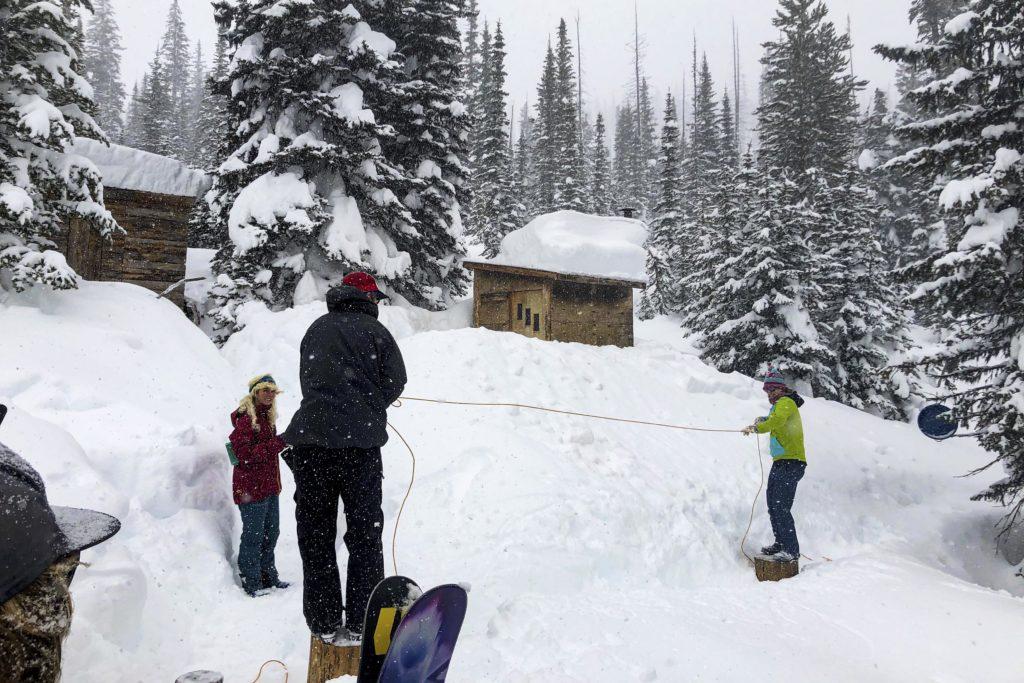
So, what do you do when you’re snowed in at the yurt on a ski trip where you can’t ski? Yurt Olympics in 80’s wear! A few people in our group created a series of athletic challenges and the games were born. We held opening ceremonies by torching a sock. There was a long jump off the balcony into the snow. Judges were designated to mark each jump and note the length. Tug of war teams were assembled and a competition ensued. We had a relay race around the perimeter of the camp. A bobsledding course was constructed. Everyone received a medal made of aluminum foil on a beaded necklace.
The close quarters of the yurt offered a dim radiance courtesy of a wood-burning stove, making it a very cozy shelter. We actually had the run of two yurts, one equipped with a kitchen and dining setup including a propane stove, pots and pans, spices and dishware. The second smaller yurt was mostly a bunk house, also heated by a wood-burning stove. Each bunk had a sleeping pad and we each brought our own sleeping bag and pillow. For breakfast, lunch and dinner we prepared meals together in the larger yurt, an improvised large family-style affair. There was an enclosed outhouse, and for the guys, a tree to pee beneath, creating a yellow hole in the snow that may or may not lead to another dimension.

For my first overnight experience, the one thing that stood out to me was that traveling in the backcountry requires respect for your environment. I had visions of powdery laps on the mountain and hours spent in the white room, but Mother Nature had other plans and I am grateful we heeded the signs. A lot of people may think that your skiing ability is the most important thing when it comes to the backcountry, but this trip really solidified for me that being knowledgeable about conditions and putting responsibility and safety before everything else should be the primary backcountry skill. Having the required knowledge of snow safety, especially with a group, is essential. It’s important to spend plenty of time preparing before the trip and know what to expect when it comes to weather, avalanche hazards, and snow conditions. Checking the local avalanche forecast and understanding the risk is critical. Bring your mapping tools and GPS devices and know how to use them. Practice plenty with your beacon, shovel and probe.
Our yurt trip was an incredible experience despite not skiing much. The group made the trip epic, and more than anything, it made me want to explore this world of backcountry skiing even further!

